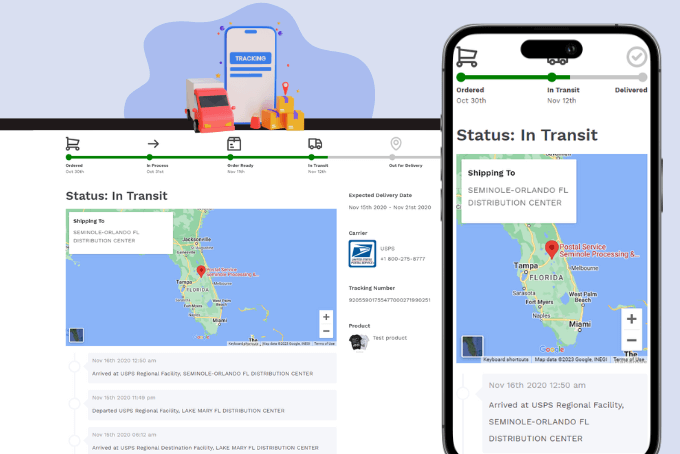The online retail industry is booming. Customers are purchasing from online marketplaces like there is no tomorrow. However, the massive growth of the retail space comes with problems like e-commerce return fraud. As online stores flourish, so does the havoc wreaked by malicious individuals seeking to exploit the system.
This blog sheds light on the shadowy underbelly of e-commerce, addressing the substantial impact and costs incurred by online retailers due to retail return fraud. In this, we will focus on 12 common types of return fraud, offering tips on safeguarding your business from being a helpless victim.
What is Return Fraud?
Return fraud is a malicious practice that has hugely affected the world of retail. It typically involves the manipulation of return policies of e-commerce businesses for personal gain. To be more precise, in this, individuals exploit the return policy to make money from refunds or replacements. This practice not only impacts retailers’ bottom line but also jeopardizes the trust and efficiency of the entire online shopping ecosystem.
A common example of retail return fraud is the practice of “wardrobing.” In this fraudulent returns scheme, a customer purchases clothing, accessories, or other non-consumable items with the intention of using them for a short period, such as wearing them to a special event. After the event, instead of keeping the item, the customer returns it to the retailer for a full refund, exploiting the store’s return policy.
Now, most people mix up return fraud with other terms like return abuse and refund fraud. But when you dig deeper, they all are different return scams with slightly varying definitions. While return fraud is a broad term that revolves around exploiting various customer-friendly return policies, refund fraud is more specific. It is about making false claims about an item to secure a refund without actually returning the item. Return abuse, on the other hand, is all about excessively exploiting the return policies of a brand to such an extent that it starts impacting the business’s bottom line.
The importance of fake returns prevention cannot be overstated. Beyond the immediate financial impact on retailers, fraudulent returns erode consumer trust, complicate inventory management, and affect return processing for customers in need. Consumers rely on hassle-free return processes to facilitate their online shopping experience. Exploiting this convenience affects their confidence in the system and increases costs for everyone involved.
12 Common Types of Return Frauds
Understanding the intricacies of return fraud is essential for businesses seeking to fortify their defenses and maintain the integrity of their operations. Here are 12 common types of return frauds, each unmasking the devious tactics employed in the realm of returns:
1. Empty Box Returns
Customers engaging in this type of online return fraud exploit the system by receiving a package from the retailer, taking out the product from the package, and then returning the empty box directly. While returning, they think the product inside won’t be checked. In some cases, they might end up claiming that the item was missing. In other words, the perpetrator has received the product without paying a single dime. This type of return fraud is usually common among sellers dealing in high-value products like electronics.

2. Stolen Item Returns
This type of return fraud is more common in physical stores where customers return stolen items for money. They even present a duplicate receipt to appear as a legitimate buyer. This malpractice can also be found in e-commerce, where the customer would place an online order, return a similarly stolen product, and get a refund. In short, they have received an original product and successfully disposed of a stolen item. This is, again, quite common in electronics like laptops and mobile phones, as they can be traced with the help of a unique number.
3. Price Switching
Dishonest customers engaged in a price switching return fraud use tactics like swapping price tags or altering barcodes on high-value items with those of lower-value products. By doing this, they deceive the system and receive a higher refund than the item’s actual value. This return fraud can also take place in the e-commerce industry. For instance, a customer purchases 2 T-shirts, one at a higher price than the other. He then exchanges the price tags of both products and returns the one with a lower price (but with the higher price tag). So, he gets to keep the higher-valued product and gets a nice fat refund for it.
4. Wardrobing
This is mainly prevalent in the e-commerce apparel sector. In this return fraud, some customers purchase clothing items, use them once, and then return them for a full refund. For instance, a customer plans to attend a one-time event like a wedding. She gets a wedding dress, uses it for the wedding ceremony, and returns it immediately after it ends. This is akin to renting products but without paying the actual rent.

5. Bracketing
Bracketing occurs when customers purchase multiple items, use some, and return the unused ones for a refund. Essentially, it allows individuals to test multiple items with the intention of keeping only the ones they find desirable while exploiting the return policy for a full refund of the rest of the products. For instance, imagine a customer needs to purchase shoes but can’t decide between the hundreds of products available in the catalog. He selects a bunch of shoes, orders them, tries them at home, selects the one he likes, and returns the rest. While this may not seem outright illegal, it still wastes the seller’s time and resources.
6. “Item Not Received” Scam
This scam is all about unscrupulous buyers exploiting the vulnerabilities of e-commerce transactions by falsely claiming non-receipt of purchased items. In this, the customer places an order and receives the product at home but raises a return request immediately that the delivery person never delivered the product. Due to the huge volume of orders, most e-commerce players do not verify the claim with the delivery person and issue either a refund or a replacement.
7. Cross-Retailer Returns
In this type of return fraud, shrewd customers often exploit price differences between online retailers by purchasing an item at a lower price from one store and returning it to another at a higher price for a refund. The buyer usually returns the item to a retailer with a more generous return policy or one that may not thoroughly verify the original purchase details.
8. Return Receipt Fraud
In this type of returns fraud, the customer forges duplicate receipts to claim refunds for items not legitimately purchased. The fraudster even ends up returning stolen items with a fake receipt generated either by using sophisticated image editing software or exploiting vulnerabilities in online receipt generation systems. This type of fraud leads to financial losses from issuing unwarranted refunds and undermines the trustworthiness of the entire digital transaction ecosystem.

9. Price Arbitrage
Price arbitrage returns fraud is all about customers purchasing similar-looking but differently-priced goods and returning the cheaper item as the expensive one. This form of return fraud relies on the visual similarity between products, allowing the fraudster to capitalize on discrepancies in pricing without arousing suspicion. The illicit gain for the fraudster lies in the calculated difference between the lower-priced item they initially purchased and the higher-priced item they deceitfully presented during the return process.
10. Opportunism
Opportunism return fraud is a deceptive practice where customers exploit lenient return policies for personal gain, typically without any genuine reason related to the product’s condition. This type of fraud occurs when individuals return an item not because it’s defective, damaged, or incorrect but rather due to a change of mind or the availability of a lower-priced alternative elsewhere. Additionally, opportunistic return fraud may involve customers intentionally providing inaccurate reasons for their return on the return form.
11. Open-Box Fraud
Open-box return fraud is a cunning scheme where individuals exploit store policies that allow returns for opened or used items. In this deceptive practice, fraudsters purchase an item at its original price, only to later return it after opening the packaging. The intent behind this maneuver is to repurchase the item at a lower price under the store’s “open-box” or discounted merchandise policies.
12. Employee Fraud
This fraudulent activity involves collusion between dishonest individuals and employees within a retail establishment. In this form of insider fraud, the perpetrators receive assistance from employees to return goods, exploiting the retailer’s return policies to secure a refund for the full price of the items. The colluding employees facilitate the return process by bypassing or manipulating standard verification procedures. This assistance allows the fraudsters to present even wrong products as legitimate returns, successfully obtaining a refund equivalent to the original purchase price.

8 Ways to Avoid Return Frauds
Return fraud poses a persistent challenge for retailers, but implementing effective prevention strategies can safeguard against financial losses while maintaining the integrity of the return process. Here are eight proactive measures to avoid falling victim to return fraud:
1. Use a Return Authorization System
Adopt a powerful return authorization system that authorizes customers and checks whether the customer is making a genuine return. By introducing this controlled process via intelligent technology, you can ensure that the return process aligns with established policies and that you are less prone to fraudulent activities.
2. Check Return History to Block Serial Returners
Regularly scrutinize and analyze return histories of individual customers. You will be able to identify recurring patterns associated with serial returners gradually. You can develop policies and restrictions to address the challenges posed by these habitual returners. This way, you will be able to discourage abusive practices and preserve the fairness of your return process.
3. Monitor Changes in Return Rates
Consistently monitor changes in return rates over time after establishing a baseline of your regular return rate. Huge fluctuations may signify potential fraudulent activities. It could also indicate the emergence of new return fraud patterns that require immediate attention, investigation, and even adaptive adjustments to policies.
4. Optimize Your Return Policy
Create a transparent and comprehensive return policy that explicitly outlines conditions, timeframes, and procedures. It is also important to balance customer satisfaction with fraud prevention. Regularly review and update your business’s return policy to make it reflect evolving retail dynamics and meet customer expectations.
5. Send Delivery Confirmation to Customers
Enhance customer experience and create a documented record of successful deliveries by providing customers with delivery confirmation notifications. This not only instills confidence in customers but also acts as a tangible record, reducing the occurrences of false “item not received” claims.
6. Track Reverse Shipping
By systematically monitoring the movement of items from the customer back to the retailer, you can identify anomalies, deter deceptive practices, and fortify your overall return security measures. Implement comprehensive tracking systems to monitor critical information related to shipping carriers, transit timelines, and the weight and condition of the returned item. This will offer valuable insights that extend beyond the point of sale.
7. Adopt Fraud Prevention Solutions
Use fraud prevention solutions and technologies that are powered by cutting-edge solutions like artificial intelligence, machine learning, and data analytics. Such advanced tools are quite adept at detecting intricate patterns and anomalies associated with fraudulent return activities, providing a proactive defense against evolving threats.
8. Educate Your Staff
Lastly, invest in comprehensive staff training programs that enhance their ability to recognize signs of return fraud. Equip your in-house customer service and supply chain operations teams with the necessary knowledge and skills to identify suspicious behavior, adhere to best practices in managing returns, and act as vigilant guardians against fraudulent activities within the retail environment.
Return Fraud FAQ: Navigating Legalities and Detection Methods
Here are some frequently asked questions about return fraud:
Is return fraud illegal?
Return fraud is indeed illegal. Engaging in deceptive practices, such as falsely claiming refunds for items not purchased or counterfeiting receipts, constitutes fraudulent activity. Retailers and law enforcement agencies should actively work to identify and prosecute individuals/organizations involved in such unlawful practices.
Is it illegal to return something to a different store?
Returning an item to a different store, especially with the intention to deceive and exploit varying return policies, can be considered fraudulent. While returning items to a different store is not inherently illegal, the motive behind such actions matters. Fraudulent returns, regardless of the location, can lead to legal consequences.
How long is the jail time for refund fraud?
The severity of legal consequences for refund fraud varies based on factors such as the amount involved, the method used, and the jurisdiction. Return fraud or refund fraud jail time can range from months to years, depending on the circumstances. Return fraud punishment may also include fines and restitution.
How to detect return fraud?
Return fraud detection requires a combination of proactive measures and advanced technologies. Retailers often utilize data analytics to identify patterns associated with fraudulent behavior. This may involve tracking return frequencies, monitoring unusual return locations, and flagging suspicious activities. Additionally, technology such as RFID tags, smart packaging (for example, with anti-wardrobing tags), and advanced point-of-sale systems can enhance fraud detection capabilities.
Reduce Return Frauds with ParcelPanel
Now that you know the different types of return fraud and how to avoid them, it is time to simplify the return process and reduce return fraud. All you need to do is adopt ParcelPanel, the world’s leading returns management software that offers a user-friendly and secure self-service portal to manage orders and returns. Here are some key features of ParcelPanel that help streamline your overall returns management operations, including return fraud prevention:
- ParcelPanel’s Returns & Exchanges app verifies the customer’s identity. This ensures that only genuine buyers apply for the refund/exchange request.
- The app also gives you an overview of return requests, top return reasons, and the most returned items in the past 7, 30, 60, 90, or 180 days or a custom time range. You can use this information to determine any major deviation in the returns rate and correct the course accordingly.
- ParcelPanel offers eligibility rules designed to evaluate a return request’s validity based on predefined criteria.
The best part is that you can directly install ParcelPanel Returns & Exchange for free in Shopify. Try it today!











![Top 10 Loop Returns Alternatives and Competitors [2025]](https://images.surferseo.art/355d37b8-6936-4be4-b677-f5314b151724.png)
















